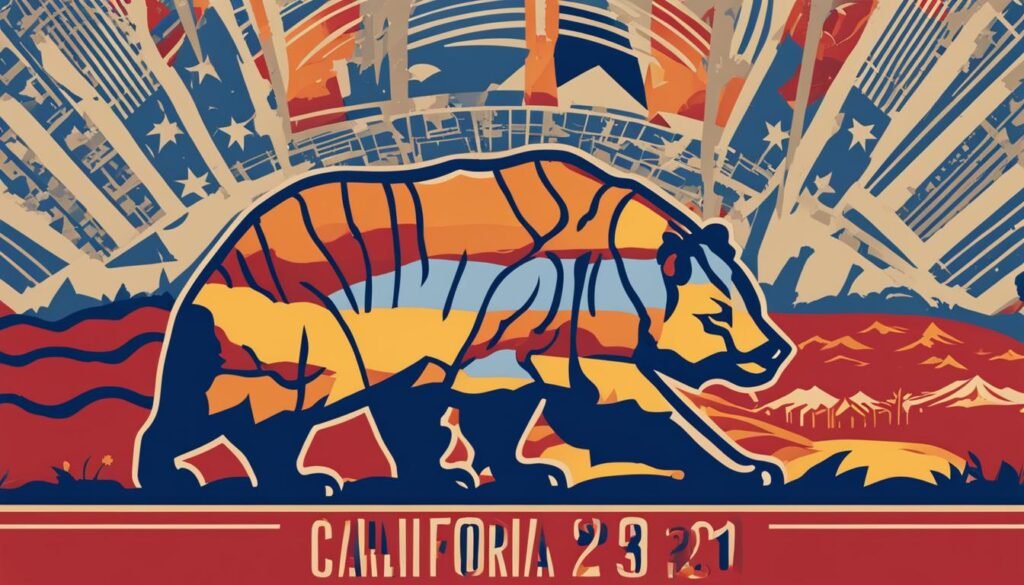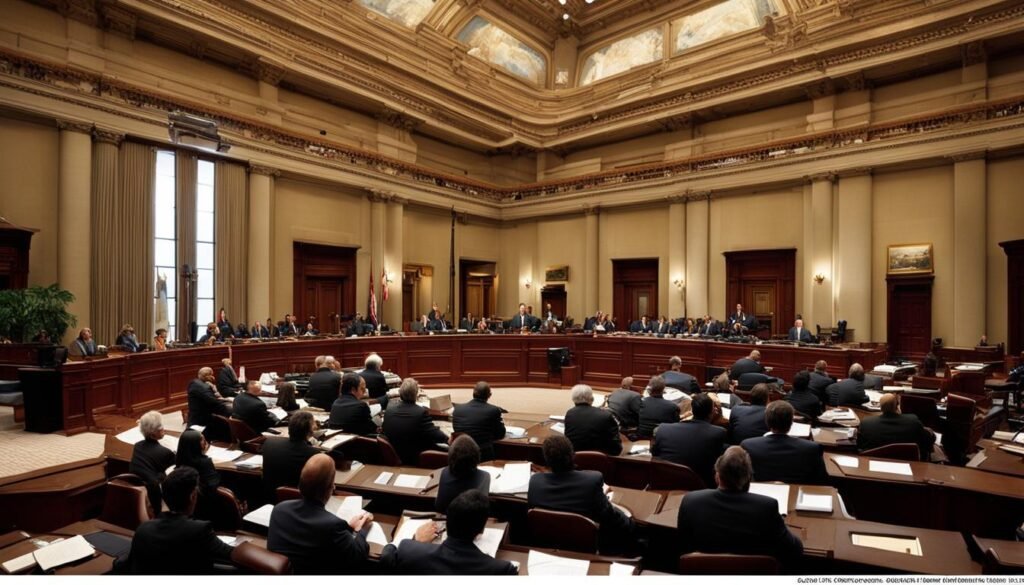California is currently undergoing a redistricting process to ensure fair representation across the state’s voting districts. The redistricting commission is responsible for redrawing the boundaries of California’s assembly and congressional districts. This process involves analyzing population data, considering input from the public, and creating new district maps. The goal is to eliminate partisan gerrymandering and create districts that accurately represent the diverse population of California.
Key Takeaways
- The redistricting process in California aims to achieve fair representation.
- The redistricting commission is responsible for redrawing district boundaries.
- Public input and population data analysis play a crucial role in the process.
- The goal is to eliminate partisan gerrymandering and create equitable districts.
- California’s diverse population is central to the redistricting efforts.
Understanding the Redistricting Process
The redistricting process in California is a multi-step endeavor that plays a critical role in shaping the state’s political landscape.
First, the process begins with gathering population data from the U.S. Census Bureau. This data provides the necessary information to determine the number of assembly and congressional districts needed.
Next, the redistricting commission engages with the public through a series of public meetings. These meetings serve as a platform for residents and stakeholders to express their opinions and concerns regarding district boundaries.
When drawing new district lines, the redistricting commission adheres to specific criteria. These criteria include ensuring equal population size, maintaining contiguity, promoting compactness, and respecting communities of interest.
The timeline for the redistricting process extends over several months, allowing sufficient time for thorough deliberation and decision-making. The final district maps are adopted before the next election cycle begins, ensuring that the newly drawn boundaries are in place for the upcoming elections.

Key Steps in the Redistricting Process:
- Gather population data from the U.S. Census Bureau
- Hold public meetings to gather input from residents and stakeholders
- Consider redistricting criteria such as equal population size, contiguity, compactness, and respect for communities of interest
- Develop and refine the district maps
- Adopt the final maps before the next election cycle
The Role of the Redistricting Commission
The redistricting commission in California plays a critical role in shaping the state’s electoral landscape. Composed of citizens selected through a rigorous application and interview process, the commission is entrusted with the responsibility of developing fair and unbiased district maps that accurately reflect the state’s diverse population. This citizen-driven approach aims to eliminate partisan bias and promote transparency and accountability.
The redistricting commission actively engages with the public through public hearings, expert testimonies, and soliciting public input to ensure that the interests and concerns of communities are taken into consideration during the redistricting process. By incorporating these inputs, the commission aims to create district maps that prioritize fair representation and uphold democratic principles.
The Citizen Redistricting Commission Selection Process
The selection process for the redistricting commission involves careful consideration to ensure a diverse representation of citizens. Individuals interested in serving on the commission must submit an application and undergo a rigorous evaluation process. The goal is to assemble a commission that reflects the demographic, geographic, and cultural diversity of California.
Through this inclusive approach, the citizens selected to serve on the commission contribute their unique perspectives and insights to the redistricting process. It empowers Californians to actively participate in shaping the state’s political boundaries, fostering a sense of ownership and accountability in the representation of their communities.
Creating Fair and Accurate District Maps
With the aim of achieving fair redistricting, the commission adheres to a set of criteria when drawing district boundaries. These criteria include maintaining equal population sizes, ensuring contiguity, promoting compactness, and respecting communities of interest.
By considering these factors and leveraging population data from the U.S. Census Bureau, the commission strives to create district maps that accurately represent the diverse population of California. This focus on fairness and accuracy enables voters to have confidence in the electoral process and ensures their voices are properly represented in the political landscape.

Through the diligent work of the redistricting commission, California aims to establish a redistricting process that is transparent, inclusive, and responsive to the needs of its citizens. By involving citizens in the decision-making process and creating fair district maps, the commission is instrumental in upholding the principles of democracy and ensuring equitable representation for all Californians.
Impact on Californians and the Political Landscape
The redistricting process in California has a significant impact on the state’s political landscape. By redrawing the district lines, the redistricting commission aims to create districts that reflect the diversity of California and provide fair representation for all residents. The new district boundaries determine which communities are included in each district and can influence the outcome of elections.
Fair and equitable district maps are crucial in ensuring that voters are accurately represented and that their voices are heard. By taking into account factors such as population size, contiguity, and respect for communities of interest, the redistricting commission works towards creating districts that truly represent the voters.
Californians rely on their elected officials to address their concerns and advocate for their needs. Through the redistricting process, voters have the opportunity to shape the political landscape and select representatives who will champion their interests at the local, state, and national levels.
Ensuring fair voter representation is the cornerstone of a healthy democracy. The redistricting process plays a crucial role in maintaining the integrity of California’s political system and upholding the principle of one person, one vote.
Ultimately, the redistricting process aims to eliminate gerrymandering and create district boundaries that accurately reflect the will of the people. By fostering fair representation and inclusivity, California can strive towards a more representative and equitable political landscape.

Conclusion
California’s redistricting process is a critical component of ensuring fair representation for voters across the state. The work of the redistricting commission in creating new assembly and congressional districts aims to eliminate partisan gerrymandering and establish district maps that are fair and equitable.
By following a transparent and citizen-driven approach, California strives to uphold the principles of democracy and provide an inclusive political landscape for its residents. Through public meetings, expert testimony, and incorporating public input, the redistricting commission ensures that the voices of the people are heard in the redrawing of district boundaries.
The impact of this process on Californians and the political landscape is profound. The new district maps determine which communities are included in each district, influencing the outcome of elections. Fair and equitable district boundaries ensure that every voter’s voice matters and that they are accurately represented in the democratic process. California’s commitment to redistricting transparency and citizen participation sets an example for other states to follow in the pursuit of fair representation for all.
FAQ
What is redistricting?
Redistricting is the process of redrawing the boundaries of political districts to reflect changes in population and ensure fair representation.
Why is redistricting important?
Redistricting is important because it determines which communities are included in each district and can influence the outcome of elections.
How is redistricting done in California?
In California, redistricting is done by a citizen redistricting commission that is responsible for creating fair and unbiased district maps.
What criteria are considered in the redistricting process in California?
The redistricting commission in California considers criteria such as equal population size, contiguity, compactness, and respect for communities of interest.
Who is on the redistricting commission in California?
The redistricting commission in California is made up of citizens who are selected through an application and interview process.
How long does the redistricting process in California take?
The redistricting process in California typically spans several months, with the final district maps being adopted before the next election cycle.
How does the redistricting process in California impact voters?
The redistricting process in California aims to ensure that voters are accurately represented and that their voices are heard in the political process.
What is the goal of redistricting in California?
The goal of redistricting in California is to eliminate partisan gerrymandering and create fair and equitable district maps that accurately represent the state’s population.







